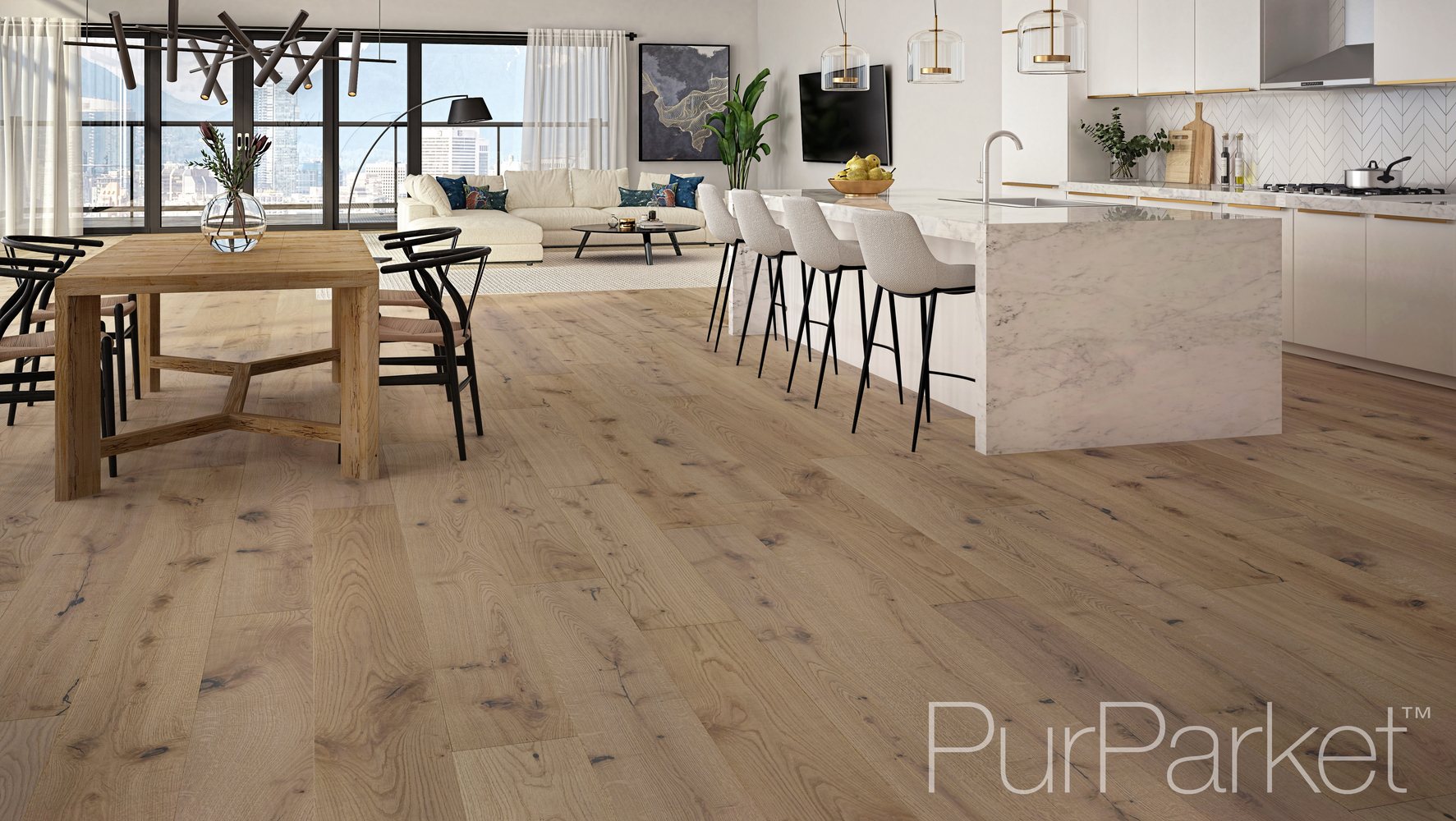Vinyl has been a popular flooring choice in our homes for decades. But today’s vinyl flooring – as many of the big-name manufacturers are quick to point out – is not your grandmother’s kitchen flooring.
Now grouped into a category called “resilient flooring,” today’s vinyl floors are manufactured using the latest advances in flooring technology. The shiny, plastic-looking floors that were once prone to scratching and scuffing, now feature more matte finishes, and are far more durable, easy to maintain, and wear-resistant than their distant cousins. In addition to offering better performance, these floors have gotten a bit of a makeover. Available in sheets, tiles, or planks, today’s vinyl flooring comes in a huge variety of colors, patterns, and trendy designs, with many high-end styles impressively mimicking the look and textures of popular materials such as real ceramic tile, stone, and wood.
Why vinyl floors?
Vinyl is one of the most versatile materials used in flooring. It is highly resistant to mold, mildew, and moisture, making it one of the most popular flooring options for kitchens, bathrooms, laundry rooms, and just about any room in which occasional spills and moisture are a concern. Also one of the most affordable flooring materials out there, vinyl is easy to install over most existing flooring, and it’s easy to maintain. Vinyl’s built-in cushiony underlayment also makes it warmer and softer underfoot than real tile, stone, or wood.


Types of vinyl flooring
For residential use, vinyl is available in a few different formats, including solid vinyl tiles and luxury vinyl tiles/planks. Both types also comes in Stone Plastic Core (SPC) or Wood Plastic Core (WPC).
Solid vinyl tile (SVT), is a pliable tile typically available in individual 12” by 12” inch squares or in strips of three. SVT most often includes a photographic print coating that lies between the backing and a clear layer of vinyl. These tiles often include an adhesive backing and require a smooth installation surface. While tiles can be installed over old flooring that is clean and in good condition, they should not be installed directly over old tiles. For these installations, the addition of a subfloor is recommended. Vinyl tiles without adhesive require spreading an adhesive over the existing floor or subfloor before setting the tiles. Since tiles have more edges, this may cause them to become loose sooner than with sheet vinyl.
Luxury vinyl tile (LVT) is the ultimate in high-end vinyl flooring, offering a more affordable option to costly flooring materials such as natural stone and wood. Using advanced 3D imaging technology, a photograph of the natural material is transferred directly to the tile. Each tile is then uniquely embossed to match the appropriate texture. The final product, which is approximately 1/8 inch thick, is made of several layers, including a protective wear layer (mil layer) and often a urethane layer for added durability. Also available in planks, these floors do a great job of realistically capturing the textures and rich grains of the natural materials they replicate. Most tiles include beveled edges and come in a variety of shapes and sizes. Wood planks can be three to four feet long, and tiles are available in very large squares that can be laid with or without grout. This realism and durability comes with a higher price tag than that of traditional solid vinyl tiles.

